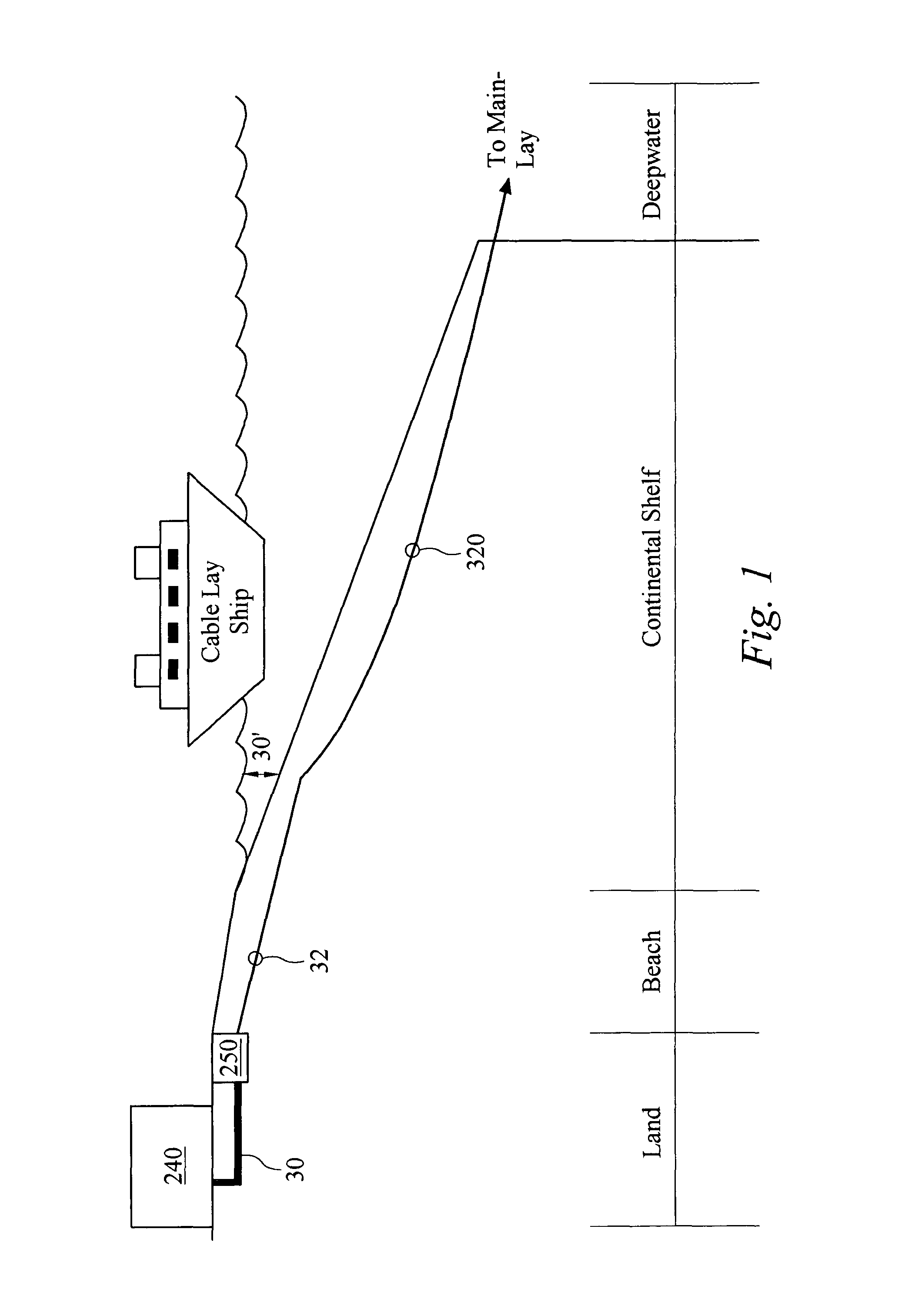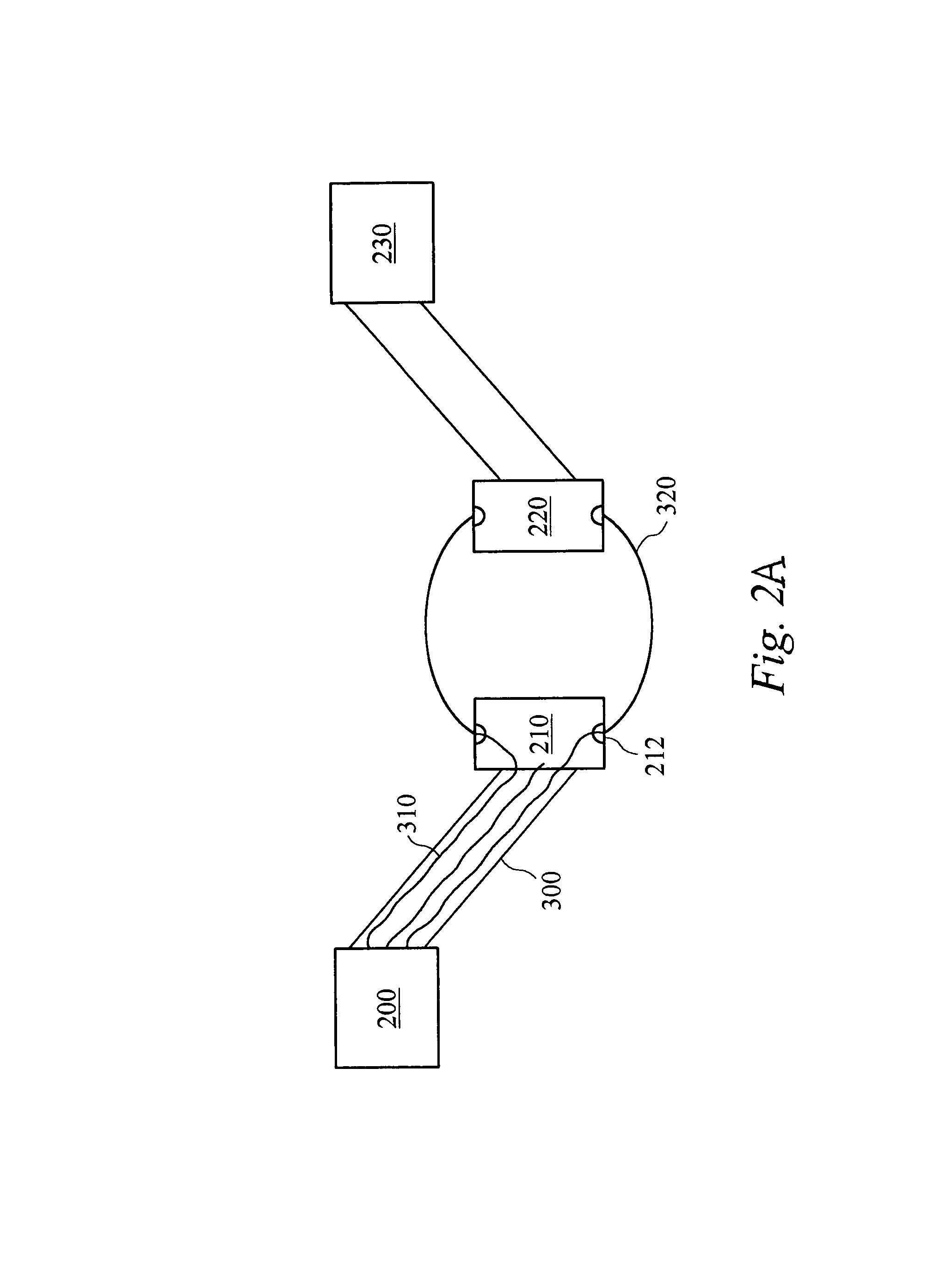Subsea cable installation
a technology for installing subsea cables and cables, applied in the direction of cables, cables laying apparatus, service pipe systems, etc., can solve the problems of affecting the service life of the subsea cable, and causing the installation of multiple initially empty ducts to be difficult or delayed, and may not only be prohibitively expensiv
- Summary
- Abstract
- Description
- Claims
- Application Information
AI Technical Summary
Benefits of technology
Problems solved by technology
Method used
Image
Examples
Embodiment Construction
[0127]FIG. 1 is a diagram illustrating an arrangement for laying a sub-sea cable. Here, a conduit 30 is laid from a cable landing station 240 to a service site 250 at the beach front. From here, a single channel 32 is bored a certain distance out into the continental shelf, typically to a water depth of 30 feet. The cable 320 is drawn through this and is then laid on the shelf. The cable is armour-plated, typically double armoured and usually buried deeply in the shelf. At the end of the shelf, the cable is then laid across the ocean floor, often trenched, until the opposite continental shelf is met.
[0128]FIG. 2a is a diagram illustrating the arrangement of the sub-sea cable according to an embodiment of the invention. Multiple ducting 300 is laid from the junction point 200 to the termination point 210. The cables 310 split up in termination point 210 and exit the splice box or termination point 210 via cable exits 212 as armoured cables 320. The same apparatus is set up at the opp...
PUM
 Login to View More
Login to View More Abstract
Description
Claims
Application Information
 Login to View More
Login to View More - R&D
- Intellectual Property
- Life Sciences
- Materials
- Tech Scout
- Unparalleled Data Quality
- Higher Quality Content
- 60% Fewer Hallucinations
Browse by: Latest US Patents, China's latest patents, Technical Efficacy Thesaurus, Application Domain, Technology Topic, Popular Technical Reports.
© 2025 PatSnap. All rights reserved.Legal|Privacy policy|Modern Slavery Act Transparency Statement|Sitemap|About US| Contact US: help@patsnap.com



